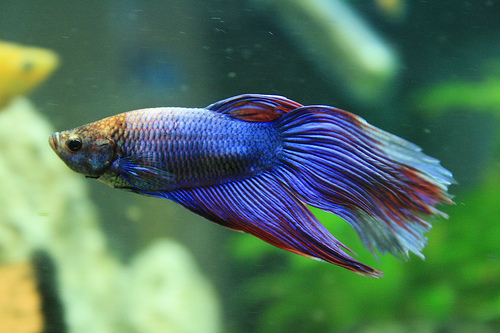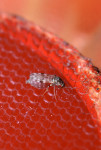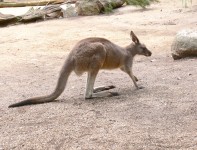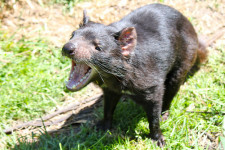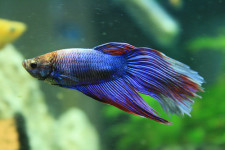
Who would know that such a small fish, such as the Siamese fighting fish, could be so aggressive?
- A Siamese fighting fish is a small freshwater fish that is native to the Mekong river system of Southeast Asia.
- The ‘Siamese fighting fish’ is also known as ‘betta fish’, while the Thai and Khmer know it as ‘pla-kad’ and ‘trey krem’ respectively.
- The scientific name of a Siamese fighting fish is Betta splendens and it is from the family Osphronemidae, the family of gouramis.
- Siamese fighting fish grow to be 6 to 8 centimetres (2.4 to 3.1 inches) in length, and they are commonly kept in domestic aquariums.
- In the wild, Siamese fighting fish are most commonly brown, silver, grey or green in colour, while the more brightly coloured ones that include red, white, green, blue or pink are specifically bred, often with large flowing tails and fins of various shapes.
Siamese Fighting Fish
Image courtesy of h080/Flickr
- Male Siamese fighting fish are usually more brightly coloured than the females, and while the female produces the 10 to 45 eggs, they are cared for by the male in a nest that he makes from bubbles, primarily due to the female’s tendency to eat her eggs.
- Male Siamese fighting fish commonly duel each other for territorial reasons, which can be fatal for them, and they show off their fins by splaying them out, and in some countries, this aggressive behaviour is taken advantage of for gambling purposes.
- Siamese fighting fish have a unique respiratory system that allows them to breath air from above water when necessary.
- Due to their aggressiveness, Siamese fighting fish are commonly thought to be incompatible in aquariums, although this is not always true, as they often leave less colourful and visually different fish alone, especially species larger than themselves.
- The diet of Siamese fighting fish consists primarily of plankton, shrimp and insects, and they generally live to be two to three years of age, although they may live for five or more years.
Bibliography:
Siamese Fighting Fish, 2015, A-Z Animals, http://a-z-animals.com/animals/siamese-fighting-fish/
Siamese Fighting Fish, 2015, Burke’s Backyard, http://www.burkesbackyard.com.au/fact-sheets/pets/pet-road-tests/fish/siamese-fighting-fish/
Siamese Fighting Fish, 2015, Wikipedia, https://en.wikipedia.org/wiki/Siamese_fighting_fish






